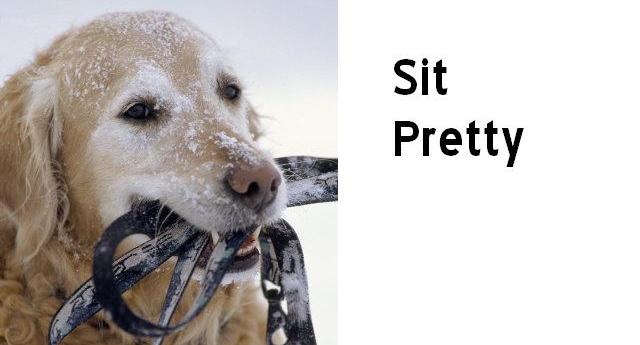
OK - technically not gift-giving yet, but visions of presents, more shopping, and sugarplums are dancing in my head. I may be scarce for the next two weeks while I shop and work on my writing (see link to writing blog way at the bottom of the page).
Quick reminder about dogs and Christmas -
If you have a golden retriever like I do, they like to snag things off the tree. My goldens think ornaments are toys that you oddly hung on the tree. My dogs also pick up and drag anything around, as long as it isn't too heavy (like the kitchen table) or nailed down.
I wouldn't go nuts and spray the tree with repellants, unless of course your dog is really obsessed. Main thing we did with our dogs was making sure we are on hand the first few days while the dog gets used to the tree with all of the special toys hanging on it.
Key word is LEAVE IT.
LEAVE IT means that you want the dog to back away and leave whatever he was eyeballing alone unless you tell them they can have it. The way you teach this is by putting something the dog might want on a chair or something at their nose level.
Put the dog on leash and walk him around the chair. The instant he shows any interest in the thing on the chair, you say "LEAVE IT" and give him a reminding pop on the leash at the same time. When he backs off and LEAVES IT, that is when he gets the praise.
Repeat a couple more times, but no more than that. On the last time, you pick up the thing from the chair and give it to your dog.
The next session (later in the day, or next day), do a reminder "LEAVE IT" + pop on the leash, but the next two times you walk around the chair say "LEAVE IT" first and pop only if the dog still lunges for the thing on the chair.
What you are looking for is a reaction to the "LEAVE IT". The instant he backs off on verbal command alone, that is when you go nuts with the praise and treats.
If you have a 'soft' dog, you probably will only need the verbal command from the beginning. If you have a mule-headed young lab, then you will go through several sessions before you finally get him to respond to the verbal command alone.
This may sound like a lot of bother compared to the easy swat your dog with a newspaper or a broom, but it's positive and doesn't involve hurting your dog.
My dogs disobey on occasion, but in general, I can tell them to LEAVE IT when they are sniffing the cat's litterbox, and they immediately back off. Same thing is true of the Christmas tree and ornaments.
TURKEY AND CANDY AND COOKIES AND OTHER JUNK
Are barely healthy and digestible for humans. They can wreak havoc on your dog's digestive system. Handouts are fine, but don't go overboard with the turkey dinner and do not give your dogs cookies or candy or fudge or anything like that. Best for them.
If I don't post again before Christmas, I wish you a very merry and happy and healthy Christmas. Be well and spoil your dogs. :)

